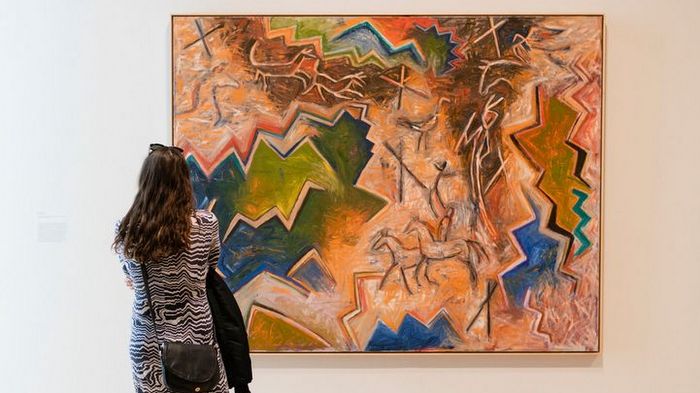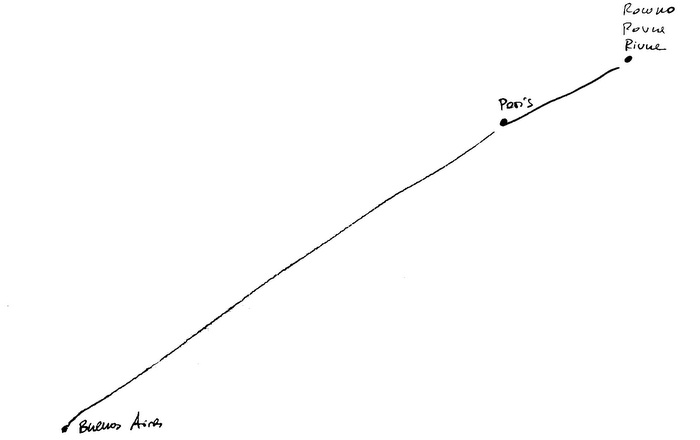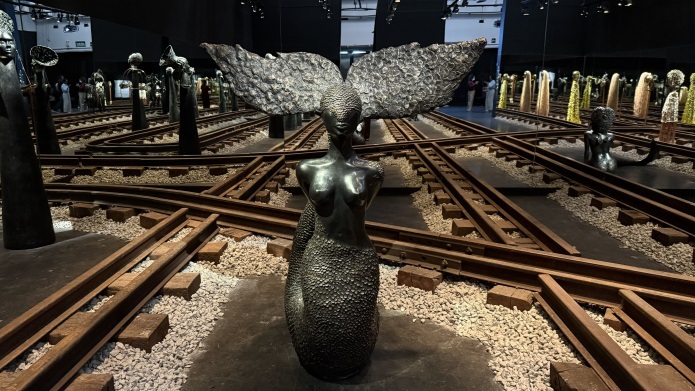Jaune Quick-to-See Smith: Memory Map, on view at the Whitney Museum of American Art from April 19 through August 13, 2023, is a recognition of a groundbreaking artist's work. For nearly five decades, Jaune Quick-to-See Smith, a citizen of the Confederated Salish and Kootenai Nation, has charted an exceptional and unorthodox career as an artist, activist, curator, educator, and advocate. The exhibition highlights how Smith uses her drawings, prints, paintings, and sculptures to flip commonly held historical narratives and illuminate absurdities in the dominant culture.
Memory Map is the largest and most comprehensive showcase of Smith's career, featuring more than one hundred thirty works. Organized thematically across the Museum's third and fifth floors, the exhibition offers a new framework to consider contemporary Native American art, addressing how Smith has led and initiated some of the most pressing dialogues around land, racism, and cultural preservation. It celebrates the artist's dedication to creativity and community and emphasizes her deep political commitments, essential and potent reminders of our responsibilities to the earth and each other.
Smith engages with modern and contemporary modes of artmaking, from an idiosyncratic adoption of abstraction to American Pop art to Neo-Expressionism. She reimagines these artistic traditions with concepts rooted in her own cultural practice to examine contemporary life in America and interpret it through Native ideology. Since the 1970s, Smith has built a visual language that includes recurring imagery, such as trade canoes, horses, bison, and flags, and common materials like newspaper, fabric, and commercial objects. Throughout her works, she addresses urgent concerns of ecological disaster, the misreading of history, and the genocide of Native Americans, while also evoking the power of kinship and education.
"The Whitney Museum is honored to collaborate with Jaune Quick-to-See Smith at this important moment in her career, and we are grateful to her for trusting us to organize the exhibition, Memory Map," said Adam D. Weinberg, the Whitney's Alice Pratt Brown Director. "As the first retrospective of an Indigenous artist organized by the Whitney, this exhibition is long overdue. Smith is not only a monumental artist but also a mentor, exemplar, and powerful influence to younger generations of Native American artists. She has brought exposure and offered encouragement to hundreds of Indigenous artists over her career. This exhibition encourages us to look at Smith and her peers anew, to be mindful of our prejudices, and to be vigilant and self-critical in our use of art historical labels and frameworks in our work moving forward."
This exhibition is organized by Laura Phipps, Assistant Curator at the Whitney Museum of American Art, with Caitlin Chaisson, Curatorial Project Assistant.
"I am immensely grateful for the trust and partnership of Jaune in every stage of this tremendous exhibition," says Phipps. "Jaune casts a wide net, and through our travels, conversations, and time in the studio, I have come to understand the awesome significance of bringing people together and the broad impact that her work has in the art world and beyond. Learning from Jaune has been a perspective-shifting experience, and it is thrilling to have the opportunity to share her life's work with our audiences at the Whitney."
"The oldest art museum in New York was inaugurated sometime in the late 1800s, 150 years ago, and there are younger art museums approximately 90 years old, yet I am the first Native woman to have a major retrospective in New York City," said Jaune Quick-to-See Smith. "The Whitney has jumped off the cliff and shattered the status quo. Hallelujah for them making this risky move. For what is the risk worth? It offers us more Native artists, the Nation's First Peoples, our Original Peoples, to become part of the mainstream art world. I am deeply grateful to the Whitney, as well as Garth Greenan Gallery, for their kind, supportive, diligent work over four years. We are making history; we are plowing new ground; we are opening a staid, closed, colonial door. I am so thankful, Lemlemts, lemlemts."
Source: Whitney Museum Press Office















